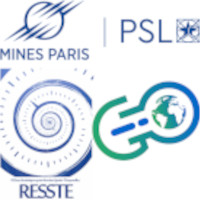This work aims to investigate the use of deep Generative Adversarial Networks (GANs) to simulate spatial data with complex correlations such as structural geological models, or geomodels. A geomodel is a representation of geometric elements of geology. Simulating geomodels is a challenging problem. It is an ill-posed problem due to the limited quantity and quality of data. Multiple geological scenarios with strongly different spatial correlations could explain the same data. Current methods, such as the potential field method based on geostatistics, struggle to both characterize all the uncertainties and produce realistic geomodels in complex geological frameworks.
This work has successfully taken advantage of advanced GANs such as Least-Square GAN (LSGAN) or Wasserstein GAN (WGAN) to reproduce the spatial correlations from a synthetic dataset of realistic geomodels. The synthetic dataset used is generated with Noddy from geological parameters. It is very similar to an object-based simulator. Once trained on the synthetic dataset, the GAN transforms a Gaussian sample into an unconditional geomodel. A possible interpretation is that the GAN learned multiple spatial correlations of what is a geomodel. In the same way as geostatistic the developed GAN produces unconditional simulations of geomodels.
The second part of this work focuses on the simulation of geomodels that honor conditioning data such as boreholes. The GAN gives access to an implicit prior distribution of geomodels. It is well suited to integrate it into a Bayesian framework. Bayesian framework allows for managing the quality and the different sources of the data. The target posterior distribution is proportional to the product between the posterior and the likelihood. The likelihood is the distribution of conditioning data on geomodels. The prior is the Gaussian distribution used as input to the GAN. In this work, a new Bayesian variational inference method has been developed based on the optimization of the Wassertein-1 distance or any f-divergence. It allows training of a sampler to sample from posterior distribution. Once trained, the combination with the GAN allows it to quickly simulate conditional geomodels.
Finally, the proposed method allows to simulate complexly correlated spatial data like geomodels. It allows handling of uncertainties while respecting the spatial organization of the training dataset. Integration into a full Bayesian framework is totally possible.
- Poster

 PDF version
PDF version

